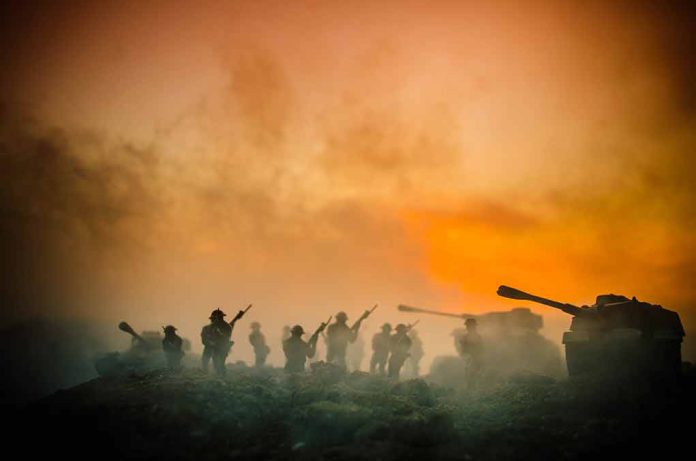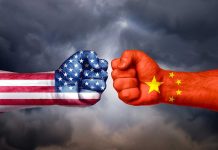
The growing alliance between North Korea and Russia in the Ukraine conflict has resulted in over 1,100 casualties, igniting regional tensions and causing global unease.
At a Glance
- Over 1,000 North Korean soldiers have died or been injured in the conflict.
- Thousands of North Korean troops are aiding Russia, especially in the Kursk region.
- North Korea is supplying sophisticated weaponry to Russia.
- South Korea and Ukraine are enhancing security cooperation in light of these threats.
Casualties and Deployment
North Korea has suffered significant losses in the Russia-Ukraine war, with over 1,100 soldiers reported dead or wounded by South Korea’s Joint Chiefs of Staff (JCS). These casualties occurred primarily in the frontline assault roles assigned to North Korean forces, who lack the capability to counter advanced warfare technologies such as drones used by Ukraine. The deployment of these troops marks a notable escalation in the ongoing conflict and highlights Russia’s reliance on external military support.
North Korea’s involvement extends beyond manpower. The regime is also supplying self-destructible drones, 240mm rocket launchers, and 170mm self-propelled artillery to Russia, boosting their military coordination. This collaboration aims to strengthen North Korea’s conventional warfare capabilities, providing valuable battle experience to modernize its military strategies.
Strategic Implications and Responses
South Korea and Ukraine have responded to these developments by enhancing their security cooperation. There are discussions about potential shifts in military support, with South Korean President Yoon Suk Yeol not ruling out the possibility of weapons transfers to Ukraine. This strategic recalibration underscores the growing threat perceived from North Korean military deployments, and further complicates the geopolitical landscape.
North Korea’s military engagement raises serious concerns for regional stability. The high casualty rate reflects the harsh battlefield realities faced by North Korean soldiers, exacerbated by their use as frontline units with insufficient defenses against sophisticated Ukrainian weaponry. Despite these losses, the cooperation between Pyongyang and Moscow persists, with North Korean leader Kim Jong Un reportedly eager to acquire advanced military technology and experience from these engagements.
“We assess that North Korean troops, who have recently engaged in combat with Ukrainian forces, have suffered around 1,100 casualties.” – South’s joint chiefs of staff (JCS) Source
Social media accounts from both official and independent sources report significant troop movements and highlight the grim realities of frontline combat. The expansion of North Korea’s military footprint through conscripted soldiers in high-risk roles indicates an entrenched partnership with Russia, which further tightens global security dynamics.
The first image of North Korean forces’ casualties on the front lines of Russia’s war in Ukraine surfaces alongside news of senior NK general’s wounding on the frontline.
Reports have indicated that approximately 10,900 North Korean soldiers have been integrated into Russian… pic.twitter.com/tNGGAw2Oxw
— dan linnaeus (@DanLinnaeus) November 22, 2024
Impact on Regional Dynamics
The intensified military cooperation between North Korea and Russia is affecting not just Ukraine, but also the broader regional landscape in Asia. South Korea has keenly observed these developments, with close surveillance on potential further troop deployments by North Korea. Beyond the battlefield, tensions between the Koreas have also flared, with North Korea launching symbolic balloon campaigns against the South.
“This could lead to an increase in the North’s military threat toward us.” – South Korea’s JCS Source
Ultimately, North Korea’s actions contribute to an increasingly precarious security environment. As Russia continues to leverage North Korean support, the international community must navigate the heightened threat landscape, balancing diplomatic pressure and military preparedness to counter this emergent alliance. The situation remains fluid, with ongoing monitoring necessary to assess future developments in this volatile region.






















